Testing the Video Colorizer VC-1 by Showtime Video Ventures
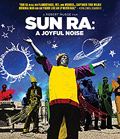 I recently posted a review of Robert Mugge’s classic documentary on Blu-ray (courtesy of MVD Visual) Sun Ra: A Joyful Noise (1980), plus some links to a pair of jazz performances in which the eccentric composer / pianist / keyboardist / poet / cosmic-Egyptian was accompanied by gorgeous 3-D styled visuals by Bill Sebastian and his OVC creature, detailed not long ago at Video Circuits with stills and video links.
I recently posted a review of Robert Mugge’s classic documentary on Blu-ray (courtesy of MVD Visual) Sun Ra: A Joyful Noise (1980), plus some links to a pair of jazz performances in which the eccentric composer / pianist / keyboardist / poet / cosmic-Egyptian was accompanied by gorgeous 3-D styled visuals by Bill Sebastian and his OVC creature, detailed not long ago at Video Circuits with stills and video links.
On a more consumer (and portable) level there were more than a few gizmos that were invented and later sold, but it seems many of these either had limited distribution, or were not mass-embraced, hence their short lifespan and induction into a gallery of must-have toys for VJs and video artists in need of one more weird arcane toy that does a very unique things extremely well.
This isn’t a put-down – I’ve cameras that do a few specific and very odd things extremely well that would never look as organic using CGI effects and plugins – but there’s a bug some people have (myself included) which compels one to seek out something odd because it’s a bit rare, and due to a keen interest to explore both what the hell it does, and how it can be applied within a digital environment.
Atari’s Video Music C-240 toy still retains value among collectors and users (I’ve a test video plus a podcast done with one coming up soon), and there’s the Showtime Video Ventures Showmaster Video Colorizer VC-1 (quite a mouthful, isn’t it?) which is even stranger because it’s a gizmo designed by techies who thought about designing something that colorizes like a solarizing plugin; synthesizes a little bit; and relies on either an internal pulse generator or audio to create blooms of colours.
It also creates these blooms in what’s best described as separate internally wired feedback loops for primary red, yellow, and blue. A series of knobs control the dynamics of the blooms as well as the colour shades and blossoms, but it’s very finicky: the slightest twist of a knob might knock down the audio level so there’s no more activity, or it might blow out the colours.
It’s all about finding a sweet spot, and I can’t imagine this device being used live for a number of reasons: the colours are rigidly primary, the ease with which one can lose that sweet spot is instantaneous (and finding it again is a bitch), and getting it to latch onto a pulse is challenging.
It requires a clean video feed, clean audio with good bass and clear tones (the Atari is far more sensitive to instrumental nuances), and you have to turn in on / off a few times to get it to lock onto the video in order to get something output. When I’ve time (like, the summer, perhaps), I might do a short demo, but the ideal is to shoot a how-to instructional, because without a manual, you’ve really no sense of how the heck this gizmo works.
It also comes with a peculiar feature called “Art Pattern” that’s really the X/Y axis of a video frame. Knobs let you adjust it up and down, and you can massively scrunch what resembles multiple colour burst lines into prehistoric-looking grids. When there’s no audio being fed into the gizmo, an internal oscillator emits a steady pulse (which is also adjustable to some degree).
When this gizmo was produced is a bit vague, but I’m guessing during the early to mid-1980s at the latest. It can be used as a standalone device, or as one manual demonstrates, in conjunction with Showtime’s combination of video mixer (the VSEC-1, which had a few incarnations), and the GP1 Camera Genlock / Power Supply.
The Video Colorizer does allow for selecting between two video sources, but no mixing. The idea in analogue 1985-ish, was you used the aforementioned gizmos to create and layer these effects, but today that’s not really necessary, although I do hope to set things up as lined out in the manuals to give an idea how much gear was required to create effects versus current software. One day.
Until then, here’s what these three look like stacked on top of each other in presumably the ideal combo for the consumer / prosumer market:
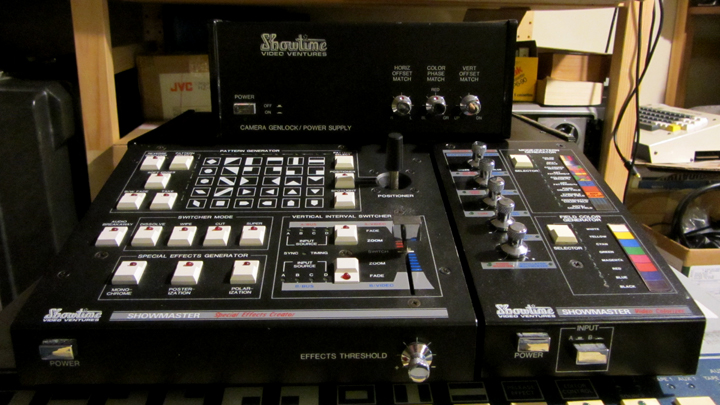
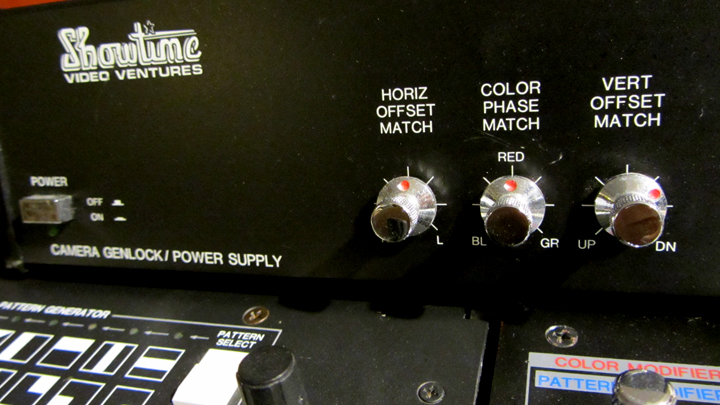
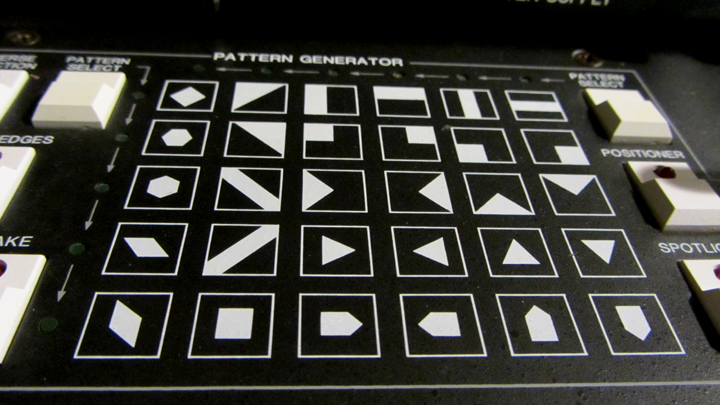
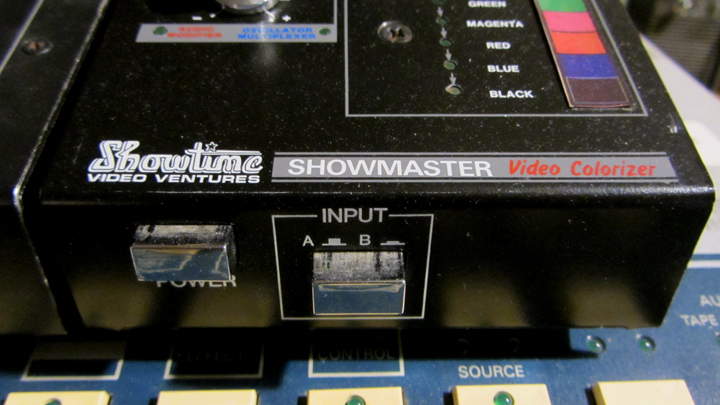
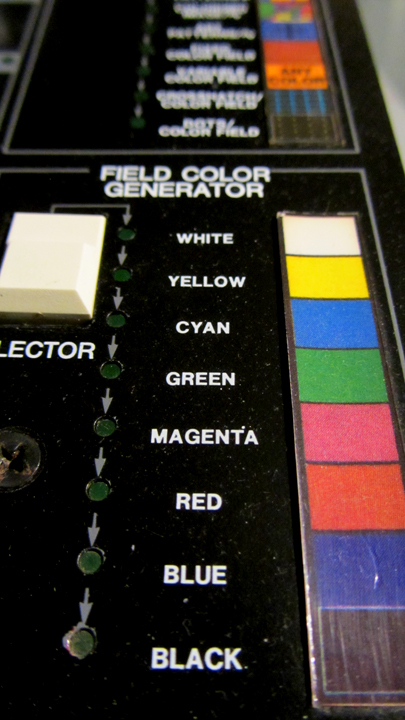
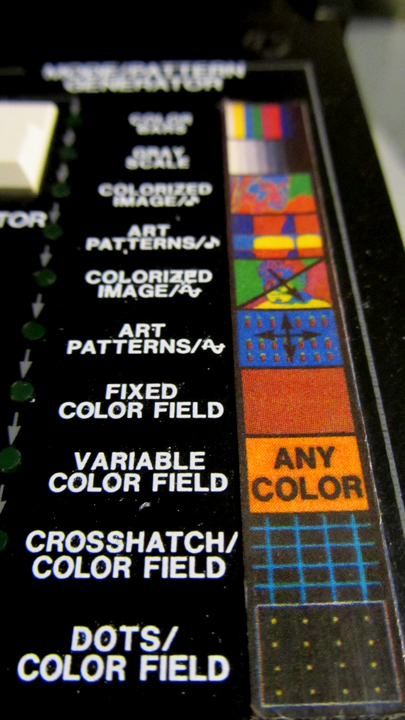
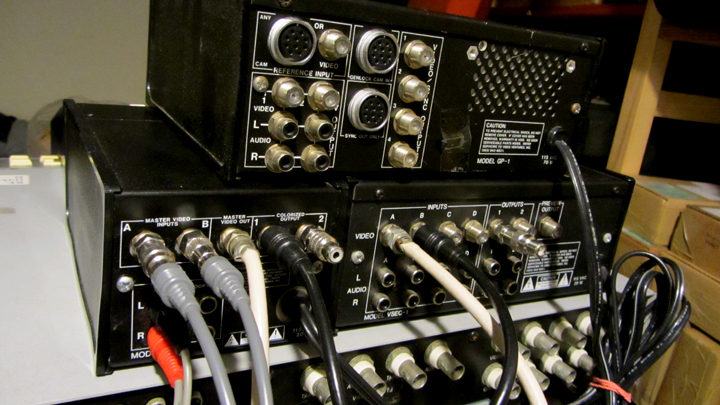
Now then. Here’s a brief rundown of what I’ve posted, but one point I have to make way up front: the audio was played into the Colorizer live, and the knobs were turned live to see what would materialize as recorded directly to the hard drive within Premiere. The layering was done in Premiere. I say this because this gizmo is not like a formal video synthesizer where you can create wholly abstract patterns.
Test 01 is the most complicated of the three because it involves feedback I recorded with an old Sony V-801 Hi8 camera to tape, played back into the Colorizer a few times emphasizing both feedback blooms and still globs that were later layered and animated (given movement) in Premiere, plus a variety of colour effects. Unlike the other tests, this one relies on editing selective portions.
The music is by Michael Wandmacher, whom I interviewed a few times at KQEK.com. Great composer, and his formal full score debut, Cry_Wolf (2005), is still one of his best:
Vimeo:
YouTube:
Test 02 involves one pass through the Colorizer. You’ll notice it takes a while for the gizmo to register sounds before the effects happen, and later in the test you’ll notice one or two blank colour spots instead of more affected footage. That’s what happens when you stray out of the sweet spot, and try and ease back in without blowing out the image.
The music is by the great Brian Tyler, riffing a heavy metal version of the Final Destination theme:
Vimeo:
YouTube:
Test 03 is solely comprised of that weird “Art Pattern” generator. Like Test 02, you’ll notice a few sections where the sync between the music is off and dead on. This is likely due to the live tuning with the knobs. In Test 01, I did a few passes and synched the takes with the first loud beat. Little by little things drift, making it obvious that if one plans to use the Colorizer in multiple passes – bass, drums, and the rest, for example – you may have to slice a frame here and there to readjust sync (or so it looks correct).
The music extract is from an early jazz album by the great Jan Hammer, whom I also interviewed way back when for Film Score Monthly. Amazing jazz work, and a pity he never felt compelled to go back to his jazz roots.
Vimeo:
YouTube:
Now that you’ve seen the videos of the layered footage, here are a few stills from the raw footage to give you an idea of what the Colorizer looks like:
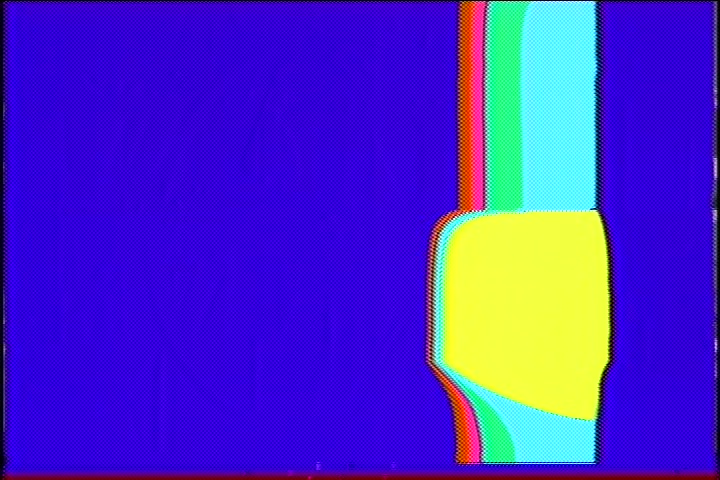
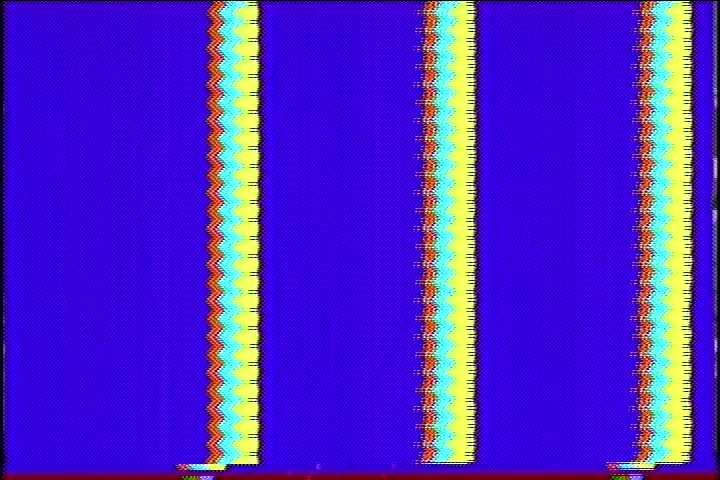
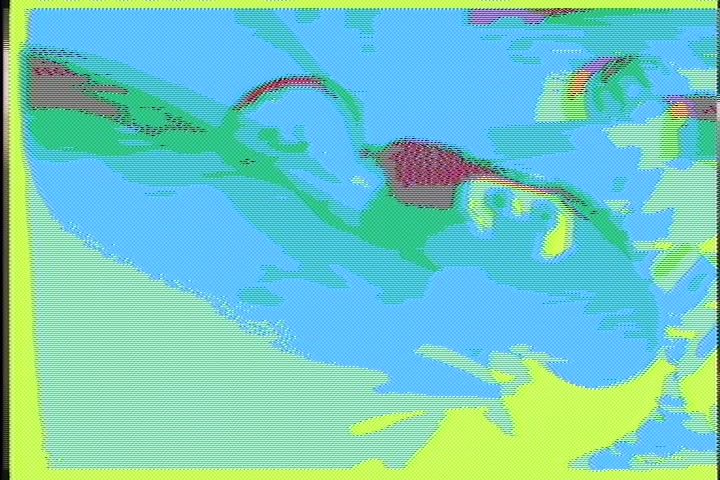
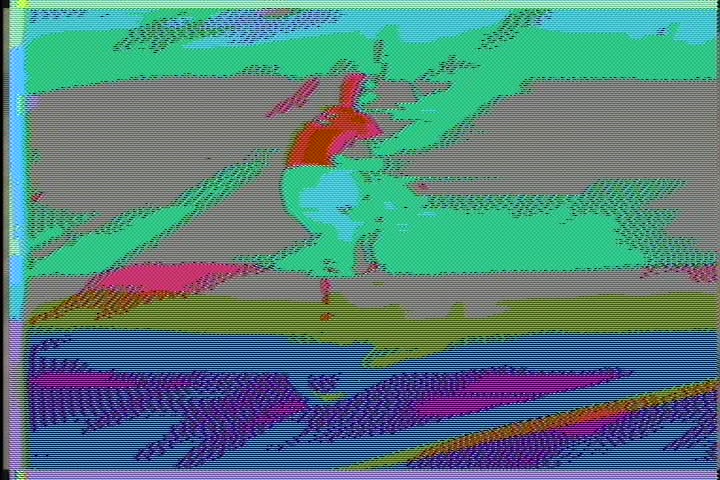
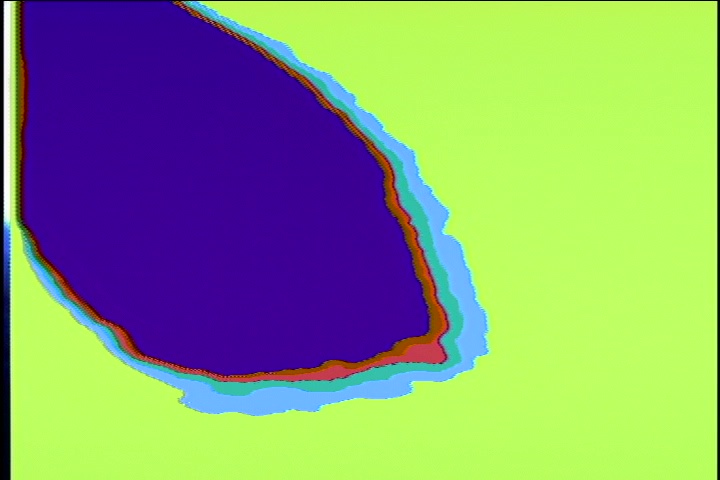
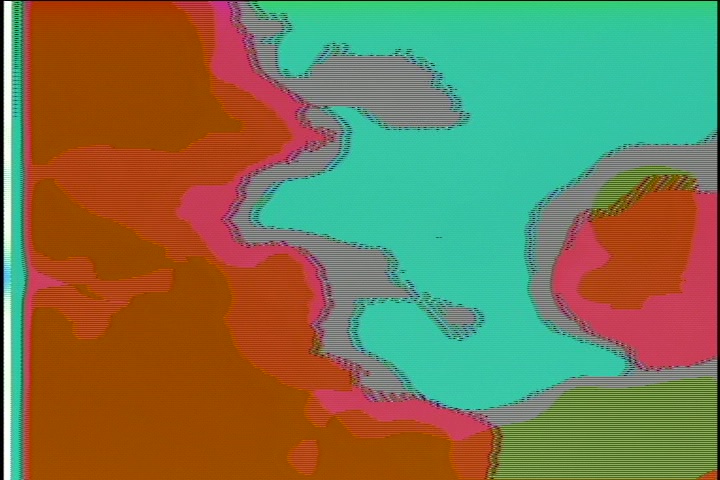
It seems limited, but much can be done when you think about the gizmo as being one of several components in your workflow.
I should have the Atari C-240 footage up ideally in a week or two, as I’m wrapping up a fresh film composer podcast, and may add some visual material to my Q&A with Hannibal’s Brian Reitzell, as he discusses scoring horror, working with vintage analogue synths, the quirks of old gear, and music concrete.
Thanks for reading,
Mark R. Hasan, Editor
Big Head Amusements
